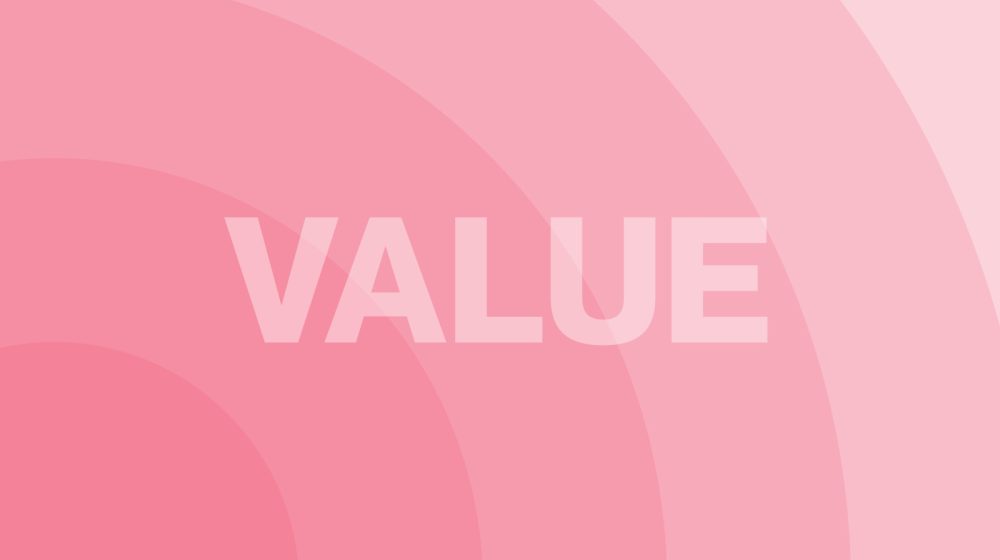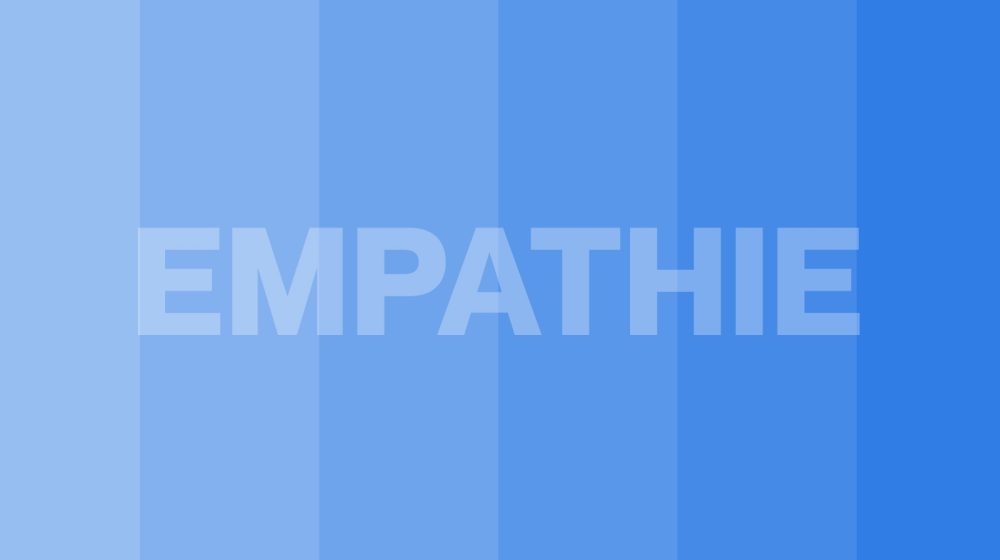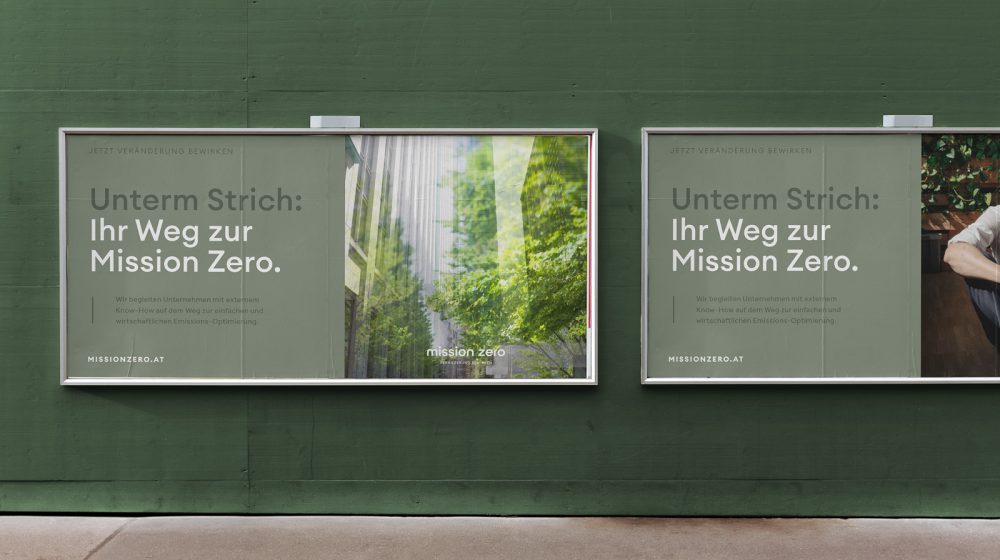Die Marke wird durch die verschiedenen greifbaren Elemente repräsentiert, die eine visuelle, auditive und olfaktorische Markenidentität schaffen und formulieren, was zu den angeborenen und inhärenten Markenelementen führt.
Zum Beispiel sind das Markenlogo, der Slogan, die Farbpalette, alle Marketing- und Werbematerialien, Briefköpfe, Beschilderungen, Nachrichten und Kommunikation usw. alles greifbare Repräsentationen der Marke, die ihre sensorische Identität auf dem Markt und in den Köpfen der Kunden ausmachen.
Als Full-Service-Marketingagentur mit den besten Erfahrungen und Kenntnissen helfen wir einer Vielzahl von Kunden, eine erkennbare Marke aufzubauen.
Wir hören oft das Wort Logo, wenn die Frage nach der Marke auftaucht, und das liegt daran, dass das Logo der Standardträger für das gesamte Markenerlebnis und alle Markenelemente ist.
Doch es gibt so viel mehr Möglichkeiten, eine Marke zu erleben, als nur ein Logo oder einen Slogan, der mit ihr verbunden ist.
Sie sehen gerade einen Platzhalterinhalt von YouTube. Um auf den eigentlichen Inhalt zuzugreifen, klicken Sie auf die Schaltfläche unten. Bitte beachten Sie, dass dabei Daten an Drittanbieter weitergegeben werden.
Mehr InformationenBrand Elements
Nachfolgend ein Überblick über die 10 wichtigsten Brand Elemente (auch engl. Brand Assets genannt) welche eine Marke auszeichnen.
Markenname
Der Markenname bezieht sich auf das Wort, die Phrasen oder Wörter, die verwendet werden, um das Unternehmen, das Produkt, die Dienstleistung oder das Konzept und andere Kernwerte der Marke zu identifizieren.
Auf den ersten Blick mag die Namensgebung einer Marke recht einfach und simpel erscheinen. Aber einen ikonischen und innovativen Markennamen zu finden, ist sehr schwierig. Denke an Marken wie Chevy, Coca-Cola, Häagen-Dazs und Target. Heute sind diese Begriffe ein fester Bestandteil unserer Alltagssprache. Und weil die Verbraucher bereit sind, mehr für Produkte mit diesen legendären Markennamen zu bezahlen, sind diese einfachen Wörter heute Millionen wert.
Logo
Um es einfach zu erklären: Ein Logo ist ein visuelles Markenzeichen, das die Marke durch seine Designelemente identifiziert.
Der Nike-Swoosh ist so bekannt geworden, dass das Wort „Nike“ nicht mehr zusammen mit ihm erscheinen muss, um als Markenname erkannt zu werden. Das Morton-Salt-Mädchen ist seit dem Jahr 1914 bekannt, auch wenn es fast sechsmal umgestaltet wurde. Wenn du einen Computer mit einem leuchtenden Apfel auf der Rückseite des Bildschirms siehst, kennst du die Marke, ohne dass ein Markenname dabei steht.
Wie bereits erwähnt, ist ein Logo der Standardträger für das gesamte Markenerlebnis und ein Markenelement, das überall zu finden ist.
Nachfolgend das Unternehmen „Kinderhotels„, ein Bespiel aus unseren Referenzen.

Tagline
„Eat Fresh.“ – Subway
„Just do it.“ – Nike
„Think Different.“ – Apple
Dies sind drei der bekanntesten Taglines der Welt. Taglines, nicht zu verwechseln mit Slogans, sind das Aushängeschild des Brand Messaging.
Mit der Markenbotschaft kommunizierst du das einzigartige Angebot deiner Marke. Manchmal ist dieses Angebot offensichtlich, wie der „Eat Fresh“-Slogan von Subway. Subway hat „Eat Fresh“ als Tagline gewählt, um sich von anderen Fastfood-Marken zu unterscheiden und sich als gesunde Alternative zu positionieren. Die Verwendung der Farbe Grün in ihrem Branding und die Werbespots mit Erfahrungsberichten von Kunden, die durch den Verzehr von Subway abgenommen haben, unterstrichen diesen Punkt.
Farben
Owens-Corning ist die einzige Marke für Glasfaserdämmung, die rosa sein kann. Die einzigartigen braunen Lastwagen und Uniformen von UPS sind zum Markenzeichen des Unternehmens geworden und lassen sich leicht erkennen. Die Kassiererinnen von Sephora tragen einen schwarzen Handschuh, mit dem sie die Produkte anfassen, bevor sie sie an die Kunden weitergeben, und der zum entscheidenden Markenelement der Marke geworden ist.
Wenn sie ihr volles Potenzial ausschöpfen, erkennen die Verbraucher eine Marke sofort an der Farbe. Das ist der Grund, warum Tiffany & Co. 1998 ihr Rotkehlchenblau zum Markenzeichen gemacht hat.

Typografie
Typografie bezieht sich auf die Schriftarten, die du in allen von dir erstellten Geschäftsmaterialien verwendest. Du solltest einheitlich sein, damit dein Branding kohärent ist und damit die Menschen, die Schriftarten sehen, die mit deiner Marke oder deinem Unternehmen in Verbindung stehen, erkennen können, dass sie von deinem Unternehmen stammen. Eine einheitliche Schriftart für dein Unternehmen macht es auch einfacher, Geschäftsinhalte in einem einheitlichen Look zu erstellen.
Der Streamingdienst Spotify zum Beispiel verwendet eine serifenlose Schrift, die auf der Plattform und in den Marketingmaterialien einheitlich ist.

Grafiken & Bildsprache
Grafiken und Bildelemente für deine Marke sind schwer zu definieren, da sie alle anderen Markenelemente umfassen, die dein Unternehmen einzigartig machen. Dein Logo ist zum Beispiel eine Grafik, die du in einer Marketing-E-Mail verwenden kannst.
Wenn du Bilder teilst, sollte der Stil, den du für die Bearbeitung verwendest, auf allen Plattformen und Materialien einheitlich und kohärent sein. Verwende z. B. die gleichen Filter für deine Bilder und schneide deine Fotos auf die gleiche Weise zu, um einheitlich zu sein.
Sean Garrette zum Beispiel ist ein Kosmetiker, der für seine Instagram-Posts das gleiche Farbschema verwendet. Wenn einer seiner Follower durch seinen Feed scrollt und schnell an einem Beitrag vorbeikommt, ohne den Profilnamen zu sehen, würde er durch Garrettes vertraute braune Farbe erkennen, von wem der Beitrag stammt.

Stimme, Sprache & Vokabular
Bei Starbucks bekommst du keinen kleinen Kaffee.
Nun, du kannst die kleinste der drei Standardgrößen bekommen… aber der Name der Größe ist „tall“.
Starbucks Bechergrößen aufgereiht mit einem Pfeil, der die aufsteigende Reihenfolge anzeigt.
Das liegt daran, dass Starbucks sein eigenes, einzigartiges Markenvokabular entwickelt hat, um sein Produktangebot von dem anderer Marken zu unterscheiden. Auch wenn Starbucks die Wörter für die verschiedenen Getränkegrößen nicht selbst erfunden hat, waren sie doch die ersten, die sie auf diese einzigartige Weise verwendet haben.
Dies ist nicht die einzige unkonventionelle Namensgebung, für die Starbucks bekannt ist. Starbucks ist auch dafür bekannt, dass sie die Namen ihrer Kunden auf den Bechern falsch schreiben – und das manchmal zum Schreien komisch ungenau. Starbucks hat zwar nicht offiziell zugegeben, dass sie die Namen ihrer Kunden absichtlich falsch schreiben, aber sie haben erkannt, dass das Schreiben von Namen auf Tassen ein lustiger Teil ihrer Marke ist. Die einzelnen Baristas haben jedoch unterschiedliche Auffassungen von den Rechtschreibfehlern.
Ein bestimmtes Vokabular ist Teil des Sprachgebrauchs einer Marke. Der Tonfall einer Marke ist die Stimme, die du in allen Texten der Marke liest, z. B. in den E-Mails, die du von ihr erhältst, in den Inhalten auf ihrer Website und in der Sprache, die sie in den sozialen Medien verwendet.
Der Tonfall ist eine der effektivsten Möglichkeiten, die Wahrnehmung deiner Marke in der Welt zu formen und zu verändern. Wendy’s ist ein Beispiel für eine Marke, die sich eine neue Persönlichkeit geschaffen hat, indem sie eine konsistente, einzigartige Persönlichkeit für die sozialen Medien entwickelt hat. Bevor Wendy’s auf Twitter vertreten war, war es nur ein Fast Food Restaurant, das eckige Burger, Frosties und Chili verkaufte. Jetzt sind sie ein Fastfood-Restaurant, das eckige Burger, Frosties und Chili verkauft und keine Gelegenheit auslässt, bissig und wild zu sein.
Musik / Melodie
Geräusche oder eine einzigartige Reihe von Tönen oder Klängen können ebenfalls dazu beitragen, die Identität einer Marke zu prägen.
Wenn von einer Marke die Rede ist, kommt den Kunden vielleicht ein Jingle in den Sinn. Zum Beispiel erkennt jeder Sportfan die Einleitung des Sports Center von ESPN an den ersten beiden Tönen des Jingles. Ein paar andere berühmte Beispiele sind „Um um gut“ für die Marke Campbells oder der Intel Inside Musikton.
Geruch
Der Geruch einer Marke trägt auch zu den allgemeinen Elementen der Markenidentität bei. Beispielsweise haben Abercrombie & Fitch Stores ganz spezielle Gerüche bzw. eigene Parfüms die angewendet werden, um den Markeneindruck für den Kunden weiter zu prägen.
Geschmack
Nicht zuletzt ist der Geschmack ein weiteres entscheidendes Markenelement, das du nutzen kannst, um dich auf dem Markt von der Konkurrenz abzuheben.
KFC hat sich sein spezielles Rezept mit 11 Kräutern und Gewürzen für Brathähnchen seit seiner Gründung schützen lassen. McDonald’s ist berühmt für seine Pommes frites. Soda-Fanatiker schwören, dass sie den Unterschied zwischen einer Cola und einer Pepsi ganz leicht erkennen können.
Zusammenfassung
Wie die obige Liste zeigt, können Marken auf viele Arten dargestellt werden, die über einen Namen, einen Slogan oder ein Logo hinausgehen. Ob durch Geruch oder Bewegung, strebe danach, alle Sinne einzubeziehen, um ein reichhaltigeres und einprägsameres Markenerlebnis für alle deine Kunden zu schaffen. Nur so kannst du eine wahrhaft bahnbrechende und unverwechselbare Markenidentität aufbauen.





